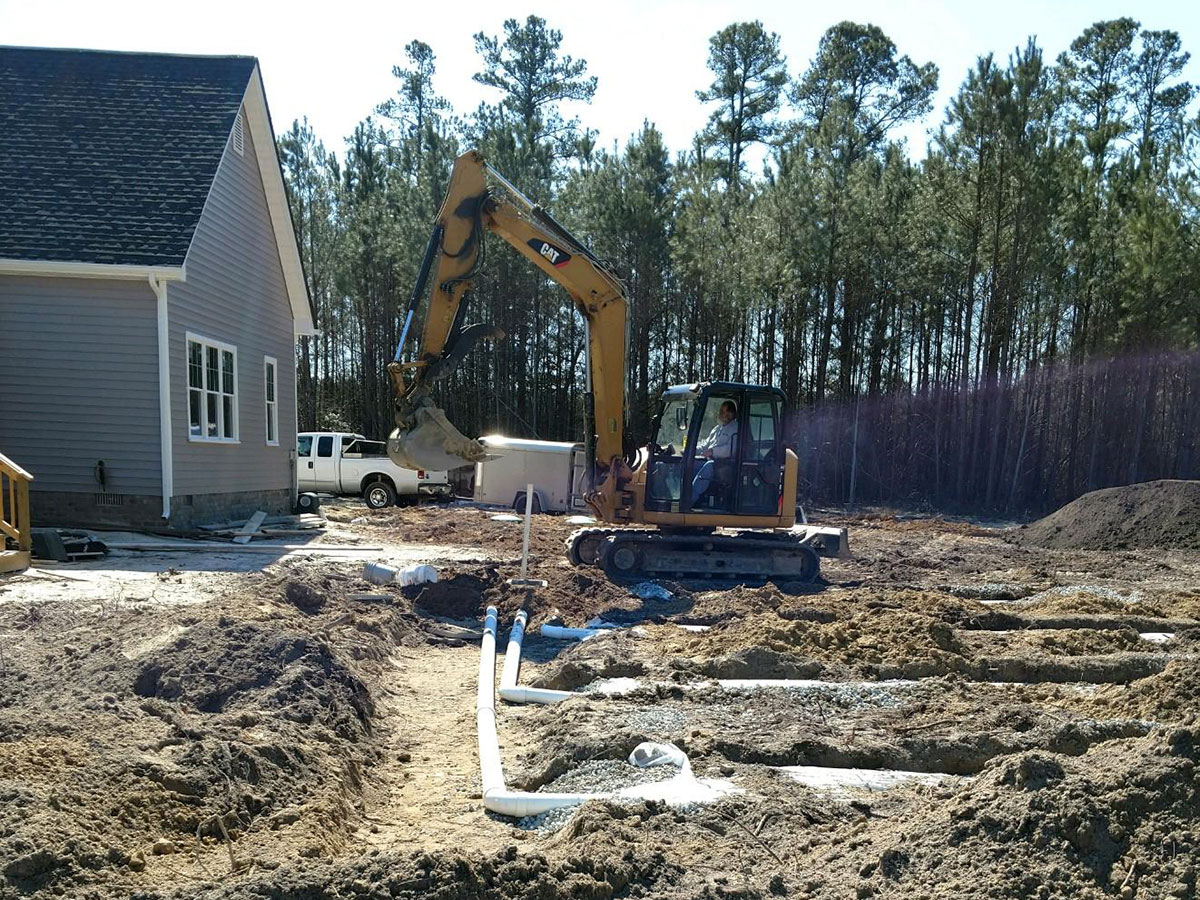
29 Mar 2018 Drainfields – An option for onsite wastewater disposal
When developing or applying for a building permit in rural areas or areas that may not have access to public sewer, certain considerations must be addressed prior to moving a project forward. The answer to this challenge will likely be the design and installation of an onsite septic system to manage wastewater outflows through soil dispersal. According to the EPA, 1 in 5 homes in the United States use a septic system, and 1/3 of all new developments use an onsite septic system to manage wastewater. Before a septic system can be designed, the site and soils will have to be evaluated by a Virginia licensed Onsite Soil Evaluator. These evaluations are often referred to as a percolation “perc” test by the general public. During a site evaluation, many factors are looked at before reaching a final conclusion. Limiting factors on a site may include landscape position, setbacks to existing wells, depth to seasonal high water table or bedrock, and lot size.
Typically an onsite septic system design considers anticipated water usage based on the number of bedrooms in a house or the average gallons per day water usage in a commercial property. This information, along with insitu soil percolation rates, measured in minutes per inch, correlated from soil textural groups are the first steps in siting a drainfield. Design guidance can be found in the sewage handling and disposal regulations issued by the Virginia Department of Health (VDH).
Getting Technical
During an onsite soil evaluation, hand auger soil borings are performed to evaluate the soils for discrete variations that may limit and affect the overall design in the septic system. These limiting variations usually are in the form of subtle colors and may indicate seasonal high water table (SHWT) in the form of depletions or redoximorphic features found in the soil matrix. Depending on the depths in which these variations occur, a certain level of pretreatment may be required prior to discharging into a soil absorption field. If characteristics of SHWT are encountered at a depth shallower than 36 inches below exiting grade, pretreatment of the effluent will be required and the drainfield will be labeled as “alternative”. If limiting factors are at a depth of greater than 36 inches or are not encountered during the investigation, the drainfield will be labeled as “conventional”.

Conventional drainfields are the standard soil dispersal method that utilizes a precast concrete septic tank, connected to a precast concrete distribution tank, which is then connected to multiple subsurface soil absorption trenches through which septic tank treated effluent is disposed of through percolation pipe into the subsurface soil stratum. Conversely, an alternative drainfield will require some sort of pretreatment to the effluent prior to dispersal. This may be achieved through the implementation of a pre-engineered treatment unit. There are many options for treatment. Some options implement an aerobic treatment unit (ATU). Other options employ an approved filtering type system that may use sand or peat moss in treatment of the effluent. In some cases a standard septic tank will still be used in conjunction with these treatment options.
What To Do
Dispersal methods can vary with regards to alternative septic systems and often must be designed by a licensed Professional Engineer. Common methods of dispersal include soil absorption trenches, shallow placed gravel pads with low pressure distribution, and pressure distribution utilizing drip irrigation hose and timed dosing. It should be noted that sometimes when the soils “perc” for a conventional septic system, an alternative septic system may still be required due to lack of suitable absorption area onsite for the proposed development.

If you have an alternative system, make sure to have the annual operation and maintenance performed by a licensed provider to ensure proper working order and future sustainability. And remember – always pump your septic tank every five years!
To learn more about managing wastewater via an onsite septic system, click here to send us an email, or give us a call at 804.541-1436. We look forward to talking with you.
By Shannon D. Hill, PE, LPSS, AOSE, Group Manager, Koontz Bryant Johnson Williams

